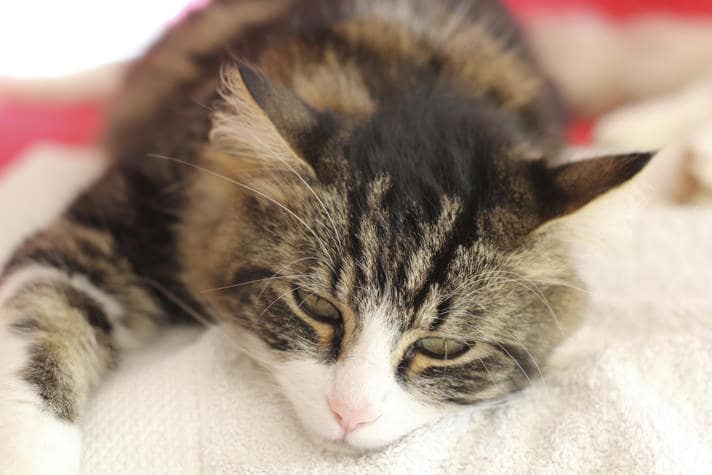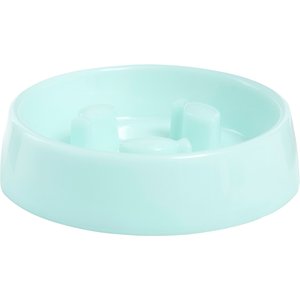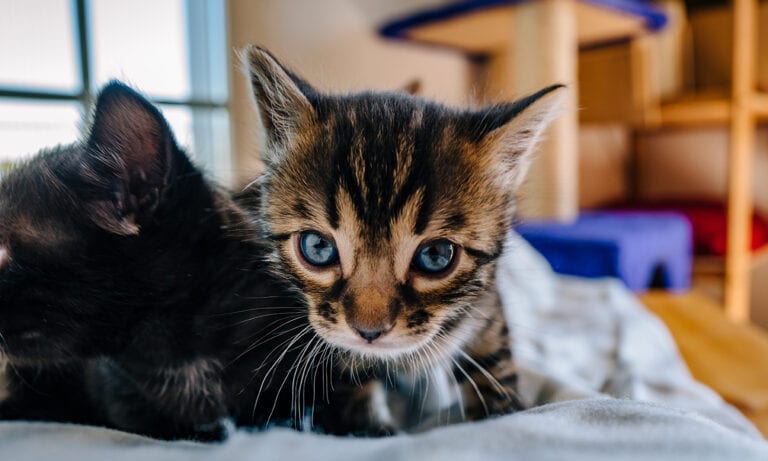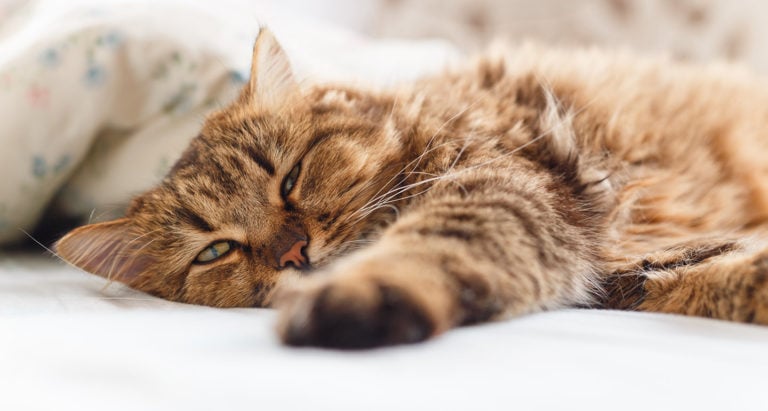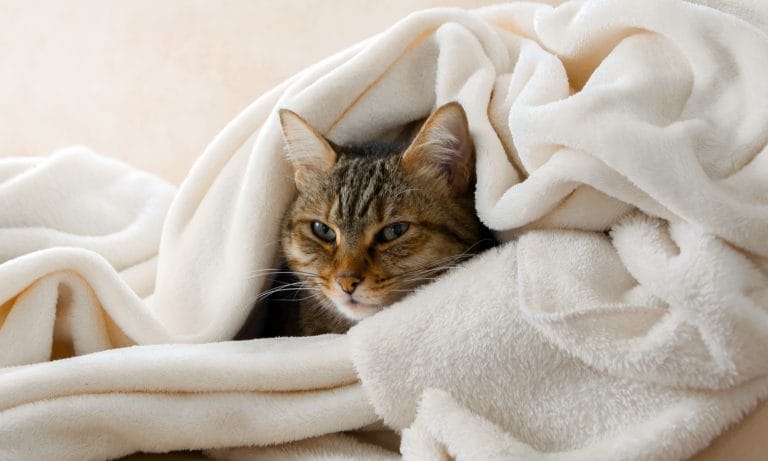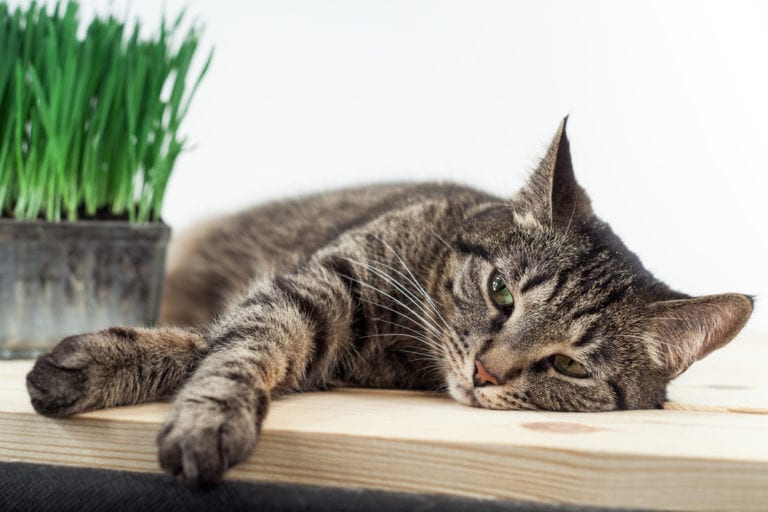Chronic vomiting in adult cats is so common that many cat owners and veterinarians accept it as part of owning a cat. Vomiting may start once per month, and then progress to twice per month. Over time, it may become weekly or even several times per week. Many cat owners cannot even recall when it started and often tell me their cat has been vomiting for “as long as I can remember.”
Having worked extensively with vomiting cats over the past six years, I have come to appreciate the excuses that we have and are using for chronic vomiting. Here they are, along with their solutions and the reality of the situation:
Excuse: My cat eats too fast.
That’s why he throws up his cat food without even chewing it. His dry food comes up in whole pieces.
Solution:
Put large marbles or smooth stones in the bowl of dry food to slow the cat’s eating.
Reality:
Cats have no flat grinding teeth. All of their teeth are sharp pointed and designed to tear off a chunk of meat then swallow it. Cats who eat dry food will chew some of the kernels, but they swallow about 80 percent of it whole. Therefore, if they vomit shortly after eating, it is going to come up in whole kernels. This does not mean that he is eating too fast. It means he is eating like a normal cat who eats dry food.
Excuse: My cat has a nervous stomach.
As soon as food enters his stomach, there is a reflex that propels the food out.
Solution:
Feed your cat a diet made for “sensitive stomachs.”
Reality:
The presence of a “nervous stomach” has never been documented in cats. These cats are vomiting for some other reason.
Excuse: My cat throws up hairballs, and that is normal.
However, my Persian rug does not appreciate normal, so I have taken some measures to stop or at least reduce it.
Solution:
Feed your cat a diet made to control hairballs. Give him a lubricant-type laxative so the hair will move through better and not create hairballs. Shave your cat (the “lion cut”) to keep him from swallowing so much hair.
Reality:
Cats have hair coats of fixed length, unlike some dogs who must have their hair cut by a groomer. Consequently, when the hair has lived its lifespan and needs to be replaced, cats shed the old hair. Cats are also programmed to groom themselves. They lick off the dead, shedding hair and swallow it. If the gastrointestinal tract is working properly, the hair passes through the stomach and intestines and is eliminated with the stool. Vomiting hairballs may occur every few months in short haired cats, but many short-haired cats never vomit hair balls. Long-haired cats are a bit different. They may vomit up to four per YEAR and be considered normal. However, any cat who vomits hairballs one to two times per month has a motility problem, which means the muscles in the wall of the small intestine do not properly contract and propel the hair downstream. It collects in the stomach or intestines and eventually is vomited.
Excuse: My cat is just a puker.
There is nothing wrong with her; she is just a little bulimic. Lots of cats are like this, and they are normal.
Solution:
Nothing needs to be done except have the Persian rug cleaned frequently or maybe replace all carpet and rugs with tile.
Reality:
Vomiting twice a month or more is not normal. If you tolerated that in one of your children, what would Child Protective Services say to you? A recent study of 1001 cats looked at the problem of chronic vomiting, and the authors, whom I led, concluded that more than 95 percent of these cats have either Inflammatory Bowel Disease (IBD) or intestinal lymphoma. In a subsequent study of 300 cats, the authors and I found that chronic vomiting due to one of those diseases is much more likely to be IBD in cats less than 6 years old, but cats over the age of 10 are likely to have either disease.
Chronic small intestinal disease needs to be considered when chronic vomiting is incurred in adult cats. If your veterinarian is not familiar with the study that has changed our view of chronic vomiting in cats, have him or her read the cited studies.
Food intolerance or food reaction is a known cause of chronic irritation to the stomach and small intestine. Most cats with food reactions are irritated by the protein source in the food — chicken, fish, beef, etc. Some of these cats exhibit itching in the skin; others have chronic vomiting or diarrhea. Biopsies of the intestines show inflammation, but it is much like the inflammation of IBD. There are no accurate blood tests for food reactions, so a food trial using a special hypoallergenic food is fed for six or more weeks. If the symptoms resolve, the suspicion is confirmed.
Are there other causes of vomiting in adult cats? Certainly.
Adult cats can swallow foreign material, like string or pieces of toys, but they are much less likely to do so than kittens or adolescent cats. By the time a cat reaches 5 or 6 years old, he is usually less interested in chewing on plants or playing with objects that could be swallowed.
Certain viruses, such as the panleukopenia virus and the feline leukemia virus, and parasites can cause vomiting. However, these causes are much less common in older cats than in younger ones.
Chronic diseases, such as hyperthyroidism and kidney disease, also may cause vomiting, but these diseases generally occur in senior cats.
Therefore, we are largely left with an occasional ingested foreign body and chronic disease of the small intestine. The latter needs to be considered very carefully before looking for the unusual causes.
References
1. Norsworthy GD, Estep JS, Kiupel M, Olson JC, Gassler LN. Diagnosis of chronic small bowel disease in cats: 100 cases (2008–2012). 2013;243(10):1455-1461.
2. Norsworthy GD, Estep JS, Hollinger C, et al. Chronic Small Bowel Disease: A Study of 300 Cats: 2008-2013. In press.
By: Dr. Gary D. Norsworthy
Share:
